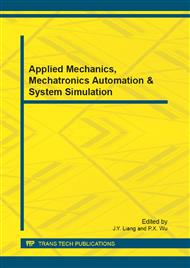p.932
p.936
p.942
p.948
p.954
p.958
p.962
p.966
p.973
A Control Method for Car Following Model Considering Changing Behaviors
Abstract:
We propose a simple control method to suppress two-lane traffic congestion for full velocity difference (for short, FVD) car-following model. The influence of lane changing behaviors is also studied in the stability of two-lane traffic flow under the boundary condition, and the friction interference which is from the neighbor lane has been taken into account. We derive the stability conditions by the control method. The feedback signals, which include vehicular information from both lanes, acting on the two-lane traffic system have been extended to the FVD car-following model. Theoretically, lane changing behaviors can break the stability of two-lane traffic flow and aggravate traffic perturbation, but it is proven that the congested traffic in two-lane traffic flow could be suppressed by using this control method.
Info:
Periodical:
Pages:
954-957
Citation:
Online since:
September 2012
Authors:
Price:
Сopyright:
© 2012 Trans Tech Publications Ltd. All Rights Reserved
Share:
Citation:


